BBL Recovery Resources

BBL Recovery Resources
Bombshell Booty Pillow: The Only BBL Pillow with 4 Patents (A Complete Review)
- #2025 best bbl pillow for driving
- #2025 best bbl pillow for plane
- #2025 best bbl pillow for travel
- #2025 best bbl pillow for work
- #2025 best bbl pillow my booty pillow
- #2025 best bbl pillows
- #2025 What is the best BBL pillow for travel?
- #bbl booty
- #BBL cushion comparison
- #bbl driving pillow
- #BBL KIT
- #BBL PILLOW
- #bbl pillow contour md
- #bbl pillow for driving
- #bbl pillow for sitting
- #BBL PILLOW NEAR ME
- #BBL pillow review
- #BBL pillow with 4 patents
- #BBL PILLOWS
- #BBL PILLOWS NEAR ME
- #BBL post surgery supplies
- #BBL proportion and balance
- #BBL recovery
- #BBL RECOVERY KIT
- #BBL RECOVERY KITS
- #BBL recovery sitting position
- #bbl surgery
- #BBL wedge pillow
- #BEST BBL KIT
- #best BBL pillow
- #BEST BBL PILLOWS
- #best surgeon for bbl surgery
- #big ass brazilian
- #Bombshell Booty Pillow
- #Bombshell Booty Pillow bbl pillow
- #Bombshell Booty Pillow bbl pillows
- #Bombshell Booty Pillow best bbl pillow
- #bombshell booty pillow Where can I buy authentic bbl recovery products online?
- #BRAZILIAN BUTT LIFT booty PILLOW
- #BRAZILIAN BUTT LIFT PILLOW
- #BRAZILIAN BUTT LIFT PILLOWs
- #BRAZILIAN BUTTock LIFT PILLOW
- #butt shaped pillow
- #contour md bbl pillow
- #fat graft survival
- #happy Booty Pillow
- #happy Booty Pillows
- #high-density foam BBL pillow
- #my booty bbl pillow
- #my booty bbl pillowm
- #patented BBL pillow
- #pillow for bbl
- #post surgery sitting pillow
- #What are the benefits of using bombshell booty pillows patent design?
- #Where can I buy authentic bombshell compression products online?
- #Where can I buy authentic ContourMD compression products online?
- #why high density BBL pillow
- #yesindeed bbl pillow
- #zero compression BBL pillow

BBL Recovery Resources
5 Recovery Mistakes That Force BBL Reduction
- #"bbl Pillows" Blowout Sale
- #"bbl Pillows" clearance Sale
- #"bbl Pillows" Sale
- #Almohada BBL
- #bbl kit
- #bbl pillow
- #bbl pillow kit
- #bbl pillow near me
- #bbl pillow patented
- #bbl pillows near me
- #BBL post surgery supplies
- #bbl recovery kit
- #BBL recovery mistakes
- #bbl recovery pillow
- #BBL reduction
- #BBL reversal
- #bbl surgery pillow
- #BBL wedge pillow
- #best bbl pillow for sitting
- #Bombshell BBL pillow
- #Bombshell Booty Pillow
- #booty pillow
- #brazilian butt lift booty pillow
- #Brazilian Butt Lift pillow
- #brazilian buttock lift pillow
- #butt pillow for bbl
- #compromised BBL results
- #fat necrosis prevention
- #high-density foam BBL pillow
- #how long to sit on bbl pillow
- #patented bbl pillow
- #pillow for bbl
- #pillows for bbl
- #post op BBL care
- #post surgery sitting pillow
- #risk of losing fat grafts after BBL
- #surgical grade BBL cushion
- #what causes fat necrosis after BBL

BBL Recovery Resources
The 'Country Club BBL': Why Subtle Results Need Extreme Recovery
- #Almohada BBL
- #are fajas good for you
- #arm lift compression garment
- #arm lipo compression garment
- #arnica cream for scars
- #arnica gel for scars
- #athletic BBL look
- #bbl booty pillow
- #bbl butt pillow
- #bbl pillow
- #bbl pillow kit
- #bbl pillow near me
- #bbl pillows
- #bbl pillows near me
- #BBL proportion and balance
- #BBL recovery kit
- #BBL recovery sitting position
- #bbl surgery
- #bbl surgery pillow
- #BBL wedge pillow
- #benefits of wearing a faja
- #best bbl pillow alternatives
- #best bbl pillow for sitting
- #best compression garment after arm lift
- #best pillow for natural BBL
- #Bombshell BBL pillow
- #Bombshell Booty Pillow
- #booty pillow
- #brazilian butt lift booty pillow
- #Brazilian Butt Lift pillow
- #brazilian buttock lift pillow
- #breast binder after surgery
- #bum pillow
- #butt pillow
- #chin bandage
- #compression binder
- #compression garments after tummy tuck
- #compression garments for weight loss
- #compression wear for loose skin
- #compression wear for weight loss
- #contour md
- #contourmd
- #contourmd compression garment
- #Country Club BBL
- #do fajas actually work
- #do fajas help you lose weight
- #do fajas really work
- #does a faja help you lose weight
- #does a faja really work
- #does wearing a faja help lose belly fat
- #faja
- #faja benefits
- #faja stages
- #fat graft survival
- #girdle
- #high-density foam BBL pillow
- #how long to sit on bbl pillow
- #is high density foam better for bbl recovery
- #lipo foam boards
- #lipo foams
- #medical compression garments
- #natural BBL results
- #neck bandage
- #patented BBL pillow
- #pillow for bbl
- #pillows for bbl
- #post op BBL care
- #post surgery compression garments
- #post surgery sitting pillow
- #post surgical compression garments
- #premium post-op cushion
- #risk of losing fat grafts after BBL
- #shaper male
- #subtle BBL recovery
- #surgical grade BBL cushion
- #tummy tuck compression garments
- #weight loss clothing
- #what are compression pants for
- #what are fajas
- #what do fajas do
- #what does a faja do
- #what is a faja
- #what is a faja clothing
- #what is a faja used for
- #what is a girdle
- #what to look for in a butt pillow after BBL

BBL Recovery Resources
HOW DO I PREPARE FOR BBL SURGERY ?
- #"bbl Pillows" Blowout Sale
- #360 foam board
- #ab boards
- #Almohada BBL
- #back streacher
- #back stretch benefits
- #back stretchers
- #bbl driving pillow
- #bbl pillow fast delivery
- #bbl pillow for sittingbbl pillow for travel
- #bbl pillow kit
- #bbl pillow near me
- #bbl pillow overnight delivery
- #bbl pillows near me
- #bbl post op supplies
- #BBL POST SURGERY SUPPLIES KIT
- #BBL recovery kit
- #bbl recovery pillow
- #bbl surgery pillow
- #BBL wedge pillow
- #BEST BBL PILLOW
- #BEST BBL PILLOW BOMBSHELL BOOTY PILLOW
- #best bbl pillow for sitting
- #best compression garments after liposuction
- #body ice sculpting
- #booty pillow
- #booty pillows
- #brazilian butt lift mattress
- #brazilian butt lift pillow
- #burning sensation after lipo
- #butt bed
- #can i use ab board without surgery
- #can you wash lipo foam
- #device for women to pee
- #do sweat vests work
- #electric back scrubber for shower
- #exercising after liposuction
- #female funnel peeing
- #female peeing cup
- #fluid pocket
- #foams lipo
- #how to get rid of numbness after liposuction
- #how to sit after bbl
- #how to sit on bbl pillow
- #how to stop burning sensation after liposuction
- #how to treat nerve pain after liposuction
- #how to use a women's urinal
- #how to use back stretcher
- #kit for bbl
- #lipo pads
- #liposuction seroma
- #motorized body scrubber
- #PILLOW FOR BBL
- #pillows for bbl
- #prayer pillow for knees
- #seroma after liposuction
- #uneven weight gain after liposuction
- #yifare invisible lift bra

BBL Recovery Resources
- #2025 How to use a BBL pillow after surgery?
- #bbl bbl butt pillow local pickup
- #bbl bed for sale
- #bbl bed with hole
- #bbl butt pillow near me
- #bbl butt pillows near me
- #BBL mattress
- #bbl mattress for side sleepers
- #bbl mattress review
- #bbl mattress reviews
- #bbl pillow after surgery
- #bbl pillow after surgery for butt
- #bbl pillow after surgery for sitting
- #BBL pillow bed
- #bbl pillow local pickup
- #bbl pillow near me
- #bbl pillow set
- #bbl pillow wholesale
- #bbl pillows local pickup
- #bbl pillows near me
- #bbl pillows wholesale
- #bbl post surgery supplies
- #bbl post-op bed
- #BBL recovery bed
- #bbl recovery kit
- #BBL Recovery pillow
- #bbl recovery supplies
- #bbl sleep essentials
- #BBL surgery essentials
- #best way to sleep after bbl
- #bombshell bbl pillow
- #bombshell booty bbl pillow
- #bombshell booty pillow bbl pillow
- #brazilian butt lift pillow near me
- #brazilian butt lift pillows near me
- #contour md bbl pillow
- #how long to use bbl mattress
- #how to sleep after a BBL
- #how to use a bbl bed
- #inflatable bbl mattress
- #is a bbl mattress worth it
- #lipo post surgery supplies
- #pillow bbl
- #pillow for bbl
- #post surgery supplies
- #post-BBL recovery mattress
- #sleeping after BBL
- #tummy tuck post surgery supplies
- #what is a BBL mattress
- #where to buy a bbl mattress
- #yesindeed bbl pillow
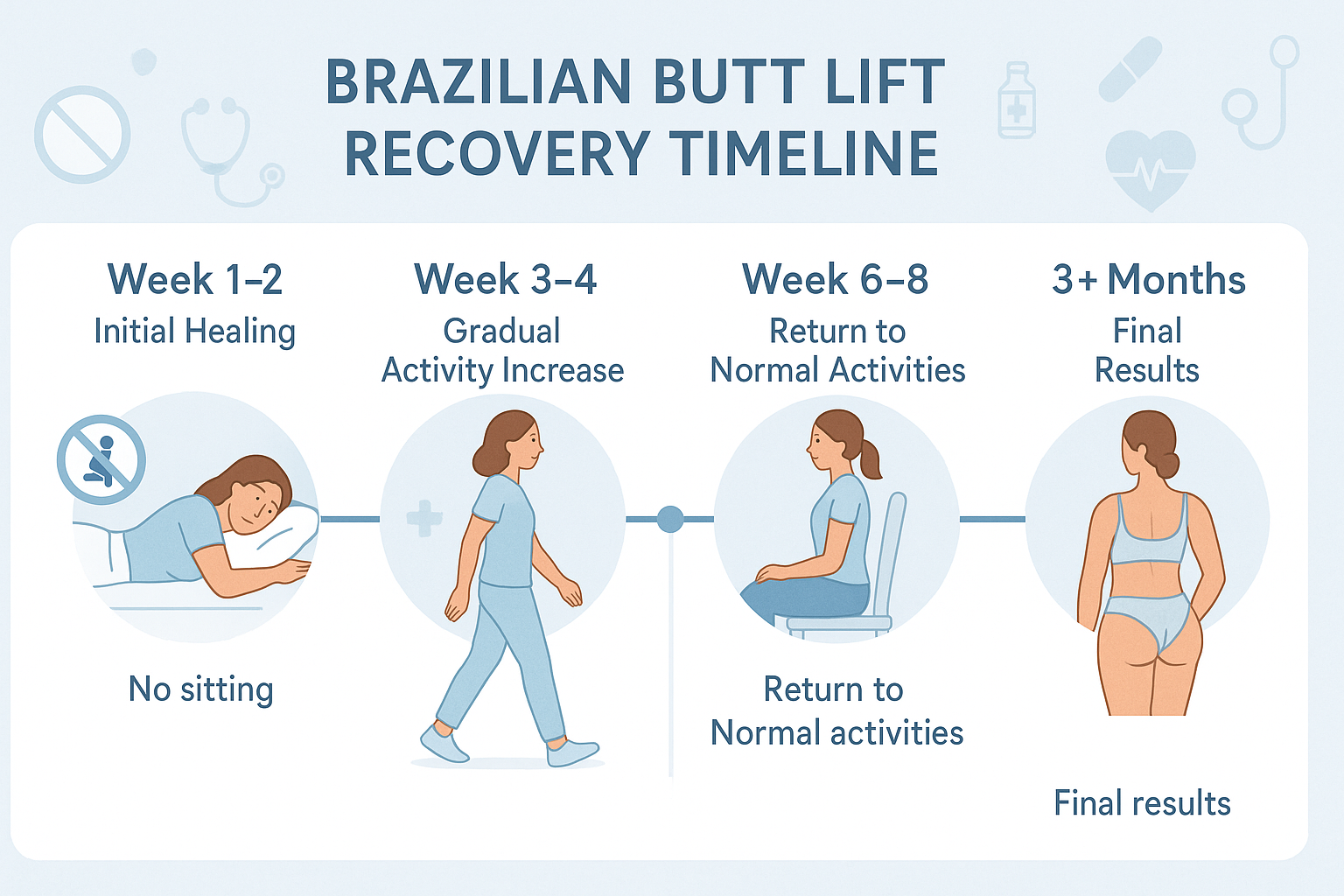
BBL Recovery Resources
How Long is BBL Recovery, Really? Your Complete Timeline
- #"Fluff" Stage
- #5 years after liposuction
- #abdominal board
- #after bbl brazilian butt lift pillow
- #amazon bbl pillow for car
- #BBL aftercare guide
- #bbl bed
- #bbl booty pillow for car
- #bbl booty pillow for driving
- #bbl booty pillow for plane
- #bbl booty pillow for sitting
- #bbl booty pillow near me
- #bbl booty pillow nearby
- #bbl booty pillows near me
- #bbl booty pillows nearby
- #bbl butt pillow
- #bbl butt pillow after surgery sitting
- #bbl butt pillows
- #bbl chair
- #BBL essentials
- #BBL essentials from bombshell booty pillow
- #bbl essentials kit
- #BBL exercise
- #BBL kit
- #bbl mattress
- #BBL pillow
- #bbl pillow after surgery sitting
- #bbl pillow for car
- #bbl pillow near me
- #bbl pillow nearby
- #bbl pillow with back support
- #bbl pillow with backrest
- #bbl pillow with backrest bundle kit
- #bbl pillow with backrest combo
- #bbl pillow with backrest kit
- #bbl pillows near me
- #bbl pillows nearby
- #bbl pillows with backrest
- #BBL Recovery
- #BBL recovery kit
- #BBL Recovery pillow
- #BBL Recovery pillows
- #BBL recovery products
- #bbl recovery supplies
- #BBL recovery time
- #BBL recovery week by week
- #BBL surgery
- #BBL surgery recovery
- #best bbl pillow
- #best bbl pillow bombshell booty pillow
- #best bbl pillows
- #bombshell bbl pillow
- #bombshell booty bbl pillow
- #bombshell booty pillow
- #bombshell booty pillow bbl kit
- #bombshell booty pillow bbl pillow
- #bombshell booty pillow bbl recovery
- #bombshell booty pillow essentials
- #bombshell booty pillow for bbl sitting
- #bombshell booty pillow for BBL surgery
- #bombshell booty pillow official store
- #bombshell booty pillow products
- #bombshell booty pillows
- #bombshell booty pillows for after surgery
- #bombshellbootypillow.com
- #bootylicious bbl pillow
- #Brazilian Butt Lift aftercare
- #brazilian butt lift booty pillow
- #brazilian butt lift booty pillows
- #brazilian butt lift pillow
- #brazilian butt lift pillows
- #Brazilian Butt Lift results timeline
- #brazilian buttock lift pillow
- #brazilian buttock lift pillows
- #compression garment after liposuction
- #contour md bbl pillow
- #faja
- #female urinal for women
- #happy booty pillow
- #how long is BBL recovery
- #how to maintain BBL results
- #how to reduce swelling
- #how to sleep after BBL
- #how to use a female urinal
- #lipo foam
- #liposuction gone wrong
- #lymphatic drainage massage after BBL
- #my booty pillow
- #nerve pain after liposuction
- #patented BBL pillow
- #patented bombshell booty pillow
- #pillow back
- #pillow for bbl
- #pillows for bbl
- #post-op BBL care.bootypillow.com
- #post-op care products
- #really
- #seroma after liposuction
- #swelling after liposuction
- #what to eat after BBL surgery
- #what to expect after BBL
- #what to expect after BBL surgery
- #when can I sit after BBL
- #yes indeed pillow
- #yesindeed bbl pillow
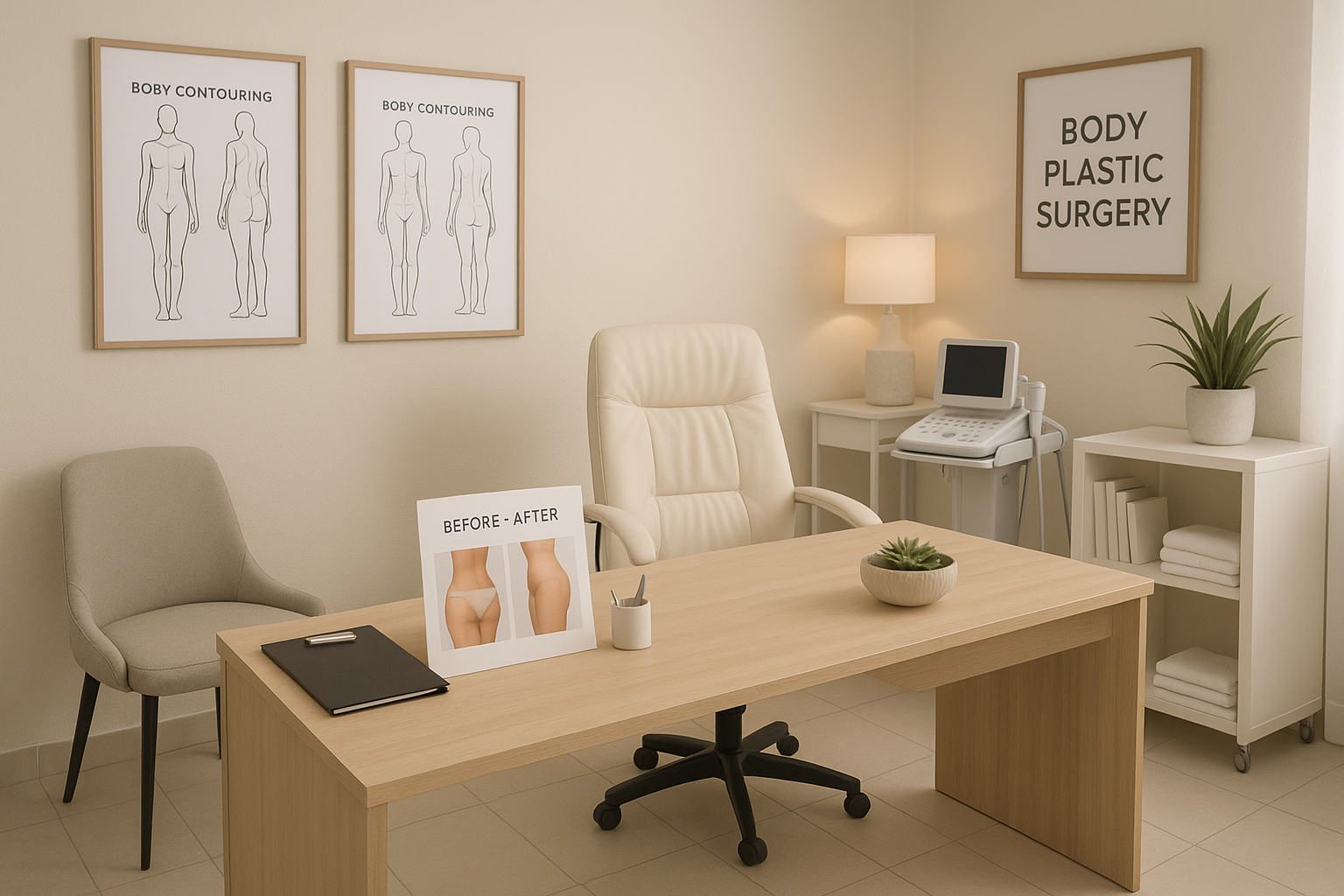
BBL Recovery Resources
Your Complete BBL Recovery Timeline week by week
- #"bbl Pillows" Blowout Sale
- #After Surgery BBL Recovery Set
- #after surgery How long does BBL recovery take?
- #after surgery How painful is BBL recovery?
- #almohada Bombshell Booty Pillow
- #are bbl kits worth it
- #bbl accessories
- #BBL aftercare guide
- #BBL before and after
- #BBL board
- #BBL booty pillow
- #BBL butt pillow
- #BBL compression garment
- #BBL do's and don'ts
- #BBL donut pillow
- #bbl healing process
- #bbl kit
- #bbl pillow for car
- #bbl pillow for sleeping
- #bbl pillow for travel
- #bbl pillow nearby
- #bbl pillow ner me
- #bbl pillow placement
- #bbl pillow set
- #bbl pillow with back support
- #bbl pillow.
- #bbl pillows near me
- #bbl pillows nearby
- #BBL post op care
- #bbl post op supplies
- #BBL post-op timeline
- #BBL products
- #BBL recovery
- #BBL Recovery Checklist
- #bbl recovery kit
- #bbl recovery pillow
- #bbl recovery pillows
- #bbl recovery products
- #BBL recovery supplies
- #bbl recovery timeline
- #BBL recovery tips
- #bbl recovery week by week
- #bbl supplies
- #bbl surgery supplies
- #BBL swelling timeline
- #BBL travel pillow
- #BBL wedge pillow
- #best BBL pillow
- #best bbl pillow bombshell booty pillow
- #best bbl pillow for driving
- #best bbl pillow for sleeping
- #best bbl pillow my booty pillow
- #best female urinal for bedridden
- #best female urinal for car travel
- #Bombshell BBL pillow
- #Bombshell BBL recovery essential accessories
- #Bombshell BBL recovery essential products
- #bombshell booty bbl pillow
- #bombshell booty pillow bbl pillow
- #bombshell booty pillow best bbl pillow
- #bombshell booty pillows
- #Bombshell Lumbar Board
- #Boppy pillow vs. BBL pillow
- #brazilian butt lift booty pillow
- #brazilian butt lift pillow
- #Brazilian butt lift recovery
- #Brazilian Butt Lift timeline
- #brazilian buttock lift pillow
- #compression garments for bbl
- #contour md bbl pillow
- #disposable female urinal
- #ergonomic bbl pillow
- #faha
- #female and male urinal
- #female bathroom urinal
- #female bed urinal
- #female disposable urinal
- #female standing urinal
- #female travel urinal
- #female urinal bottle
- #female urinal device
- #female urinal festival
- #female urinal for bbl recovery
- #female urinal for bedridden
- #female urinal hospital
- #female urinal portable
- #female urinal pot
- #female urinal seat
- #female urinal toilet
- #foam liposuction
- #happy booty pillow
- #happy booty pillow bbl pillow
- #how to protect BBL results
- #how to sit after bbl
- #how to sit on bbl pillow
- #how to sit on boppy pillow
- #how to sleep after bbl
- #how to use a bbl pillow
- #how to use female urinal
- #how to use female urinal device lying down
- #how to use female urinal in bed
- #how to use female urinal toilet
- #is boppy pillow good for bbl Boppy Pillow Good for BBL Recovery
- #lapee female urinal
- #loona female urinal
- #lymphatic drainage massage
- #my booty pillow bbl pillow
- #ogee roller
- #pillow for bbl
- #pillows for bbl
- #post-op BBL care
- #Post-Surgery Kits
- #sleeping after bbl
- #standing female urinal
- #what is better
- #what to buy for bbl recovery
- #what to expect after bbl
- #yesindeed bbl pillow
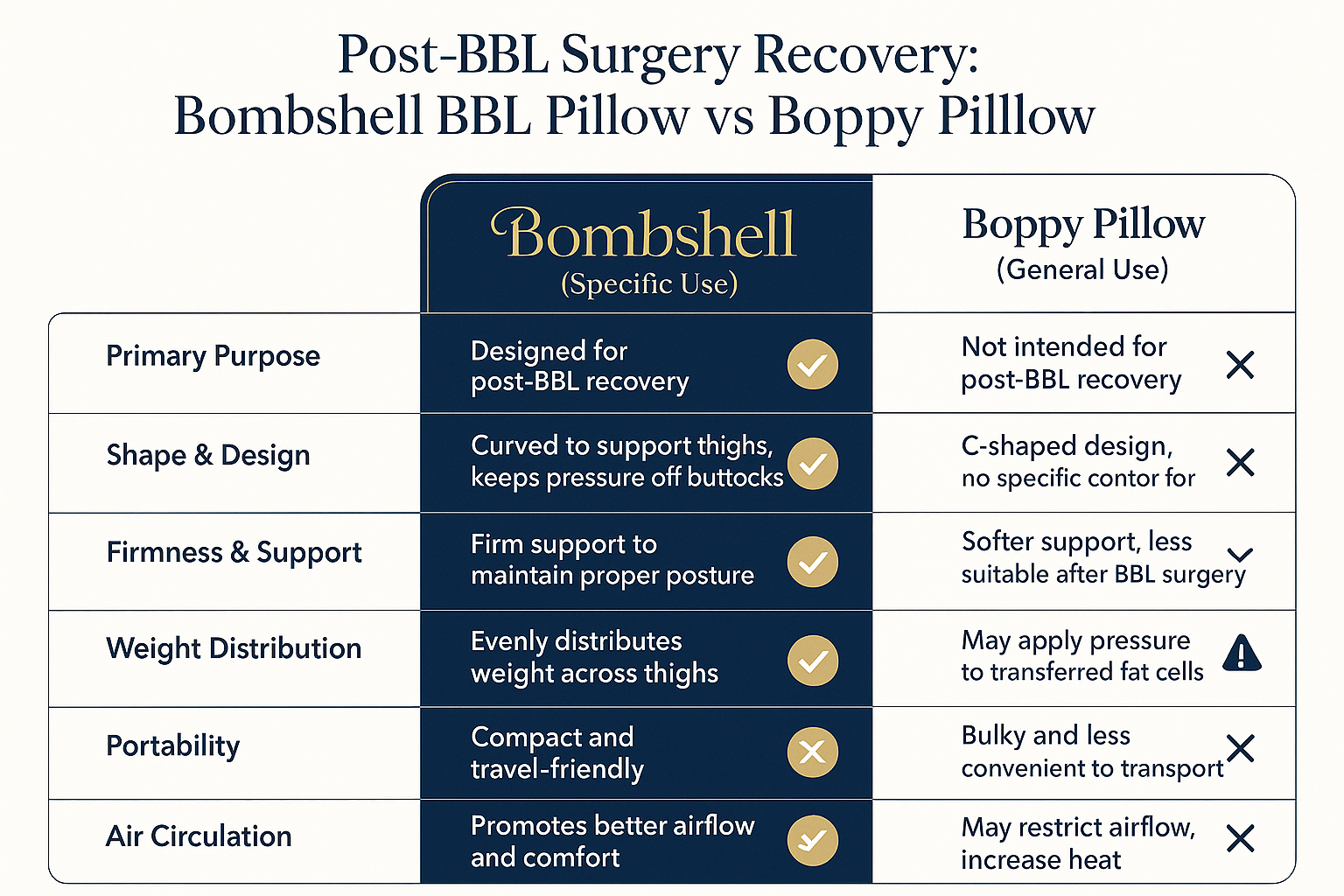
BBL Recovery Resources
BBL Pillow vs. Boppy Pillow: Which Is the Best for You?
- #5 years after liposuction
- #abdominal board
- #alternative to liposuction
- #arm reduction without surgery
- #bbl bed
- #bbl exercise
- #BBL fat transfer survival
- #bbl mattress
- #BBL Pillow
- #bbl pillow for sleeping
- #bbl pillow near me
- #bbl pillow nearby
- #BBL pillow vs boppy pillow
- #bbl pillows
- #bbl pillows near me
- #bbl pillows nearby
- #BBL Recovery
- #bbl recovery pillow
- #BBL surgery recovery
- #best bbl pillow
- #best bbl pillow bombshell booty pillow
- #best bbl pillow for sleeping
- #best compression garment after liposuction
- #best pillow for bbl recovery
- #bombshell booty bbl pillow
- #bombshell booty pillow
- #bombshell booty pillow bbl pillow
- #bombshell booty pillow patent pillow
- #bombshell booty pillows
- #Boppy Pillow
- #boppy pillow for bbl
- #Brazilian Butt Lift
- #Brazilian Butt Lift aftercare
- #brazilian butt lift bed
- #brazilian butt lift mattress
- #brazilian buttock lift pillow
- #chin lipo scars
- #chin liposuction scar
- #comfortable kneeling pad
- #device for women to pee
- #do sweat suits work
- #electric back scrubber
- #exercise after liposuction
- #female device for urinating
- #flexible back stretcher
- #floor back stretcher
- #foam board lipo
- #foam board liposuction
- #foam for liposuction
- #foam liposuction
- #foams for lipo
- #foams lipo
- #funnel for peeing
- #how do you use a female urinal
- #how long after bbl can i sit without pillow
- #how to treat nerve pain after liposuction
- #how to use a back stretcher
- #how to use a female urinal
- #how to use back stretcher
- #how to use female urinal
- #ice sculpting body
- #is arm liposuction worth it
- #knee pads for prayer
- #kneeling pads for work
- #lipo board
- #lipo board vs lipo foam
- #lipo foam
- #lipo foam and board
- #lipo foam boards
- #lipo foam pads
- #lipo foams
- #lipo gone wrong
- #lipo massager
- #liposuction foams
- #liposuction gone wrong
- #motorized body scrubber
- #ogee roller
- #pee funnel for ladies
- #peeing device woman
- #peeing devices for women
- #pillows for kneeling
- #plastic surgeon recommended pillow
- #Plastic Surgery
- #post bbl care
- #post-op BBL recovery
- #Post-Op Recovery
- #proper back stretcher
- #rigid board like abdomen
- #safe sitting after BBL
- #seroma after lipo
- #seroma after liposuction
- #sweat suit lose weight
- #sweat suits to lose weight
- #urinary devices female
- #urine funnel for females
- #when can i lift weights after liposuction
- #when to start wearing ab board after lipo
- #woman pee tool
- #women's urination funnel
- #womens urine device
- #yesindeed
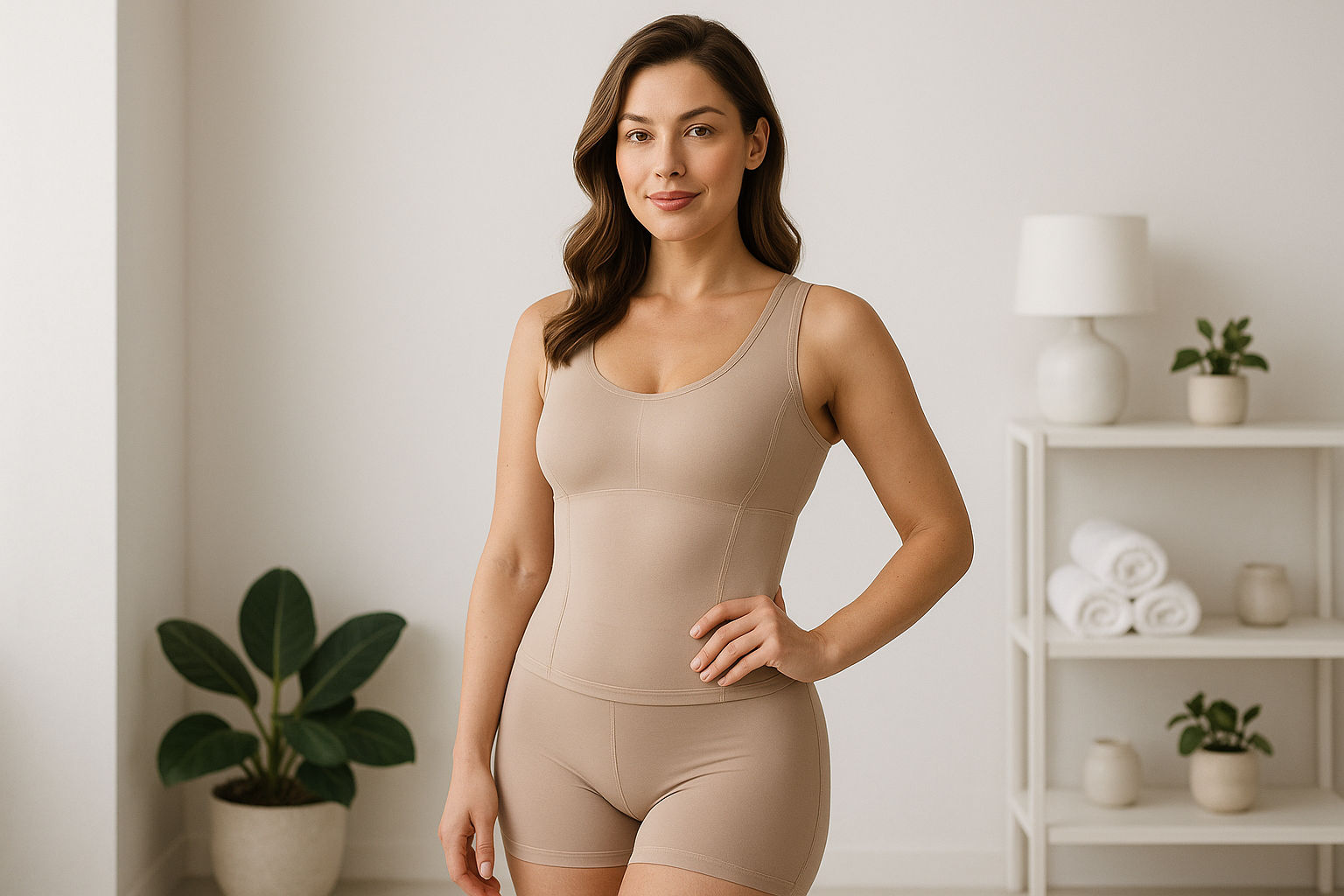
BBL Recovery Resources
Our Ultimate Guide to a Smooth BBL Recovery
- #"bbl Pillows" Blowout Sale
- #amazon bbl pillows
- #Are BBL pillows washable?
- #bbl accessories
- #bbl booty pillow
- #bbl booty pillows
- #bbl butt pillow
- #bbl butt pillows
- #BBL healing process
- #bbl kit
- #BBL pillow
- #bbl pillow for car
- #bbl pillow for driving
- #bbl pillow for travel
- #bbl pillow kit
- #bbl pillow near me
- #bbl pillow with back support
- #bbl pillows
- #bbl pillows near me
- #bbl post op care
- #bbl post op supplies
- #bbl post surgery kit
- #BBL post-op guide
- #BBL recovery
- #BBL recovery chair
- #BBL recovery essentials
- #BBL recovery pillow
- #bbl recovery pillows
- #BBL recovery products
- #BBL recovery timeline
- #bbl supplies
- #bbl surgery pillow
- #bbl surgery preparation
- #BBL surgery supplies
- #best bbl pillow
- #best bbl pillow for driving
- #best bbl pillow for sitting
- #best bbl pillows
- #best pillow for bbl
- #best pillow for BBL recovery
- #big booty pillow
- #bombshell bbl pillow
- #bombshell booty pillow
- #booty pillow
- #booty pillows
- #Brazilian butt lift
- #brazilian butt lift booty pillow
- #Brazilian butt lift pillow
- #Brazilian butt lift recovery
- #brazilian buttock lift pillow
- #brazilian buttock pillow
- #bruising and swelling after bbl
- #compression garments
- #compression garments for bbl
- #ergonomic bbl pillow
- #fat transfer
- #fat transfer survival
- #how long to use a bbl pillow
- #how to sit after a bbl
- #how to sit after bbl surgery
- #how to sleep after bbl
- #how to use a BBL pillow
- #liposuction recovery
- #lymphatic drainage massage
- #pillow for bbl
- #pillows for bbl
- #plastic surgery recovery
- #post-op recovery from cosmetic surgery
- #post-op supplies
- #post-operative care
- #sleeping after bbl
- #surgeon recommended
- #surgeon recommended bbl pillow
- #surgical accessories
- #swelling and bruising
- #what supplies are needed for bbl surgery
- #what to buy for bbl recovery
- #what to pack for BBL surgery
- #why use a BBL pillow
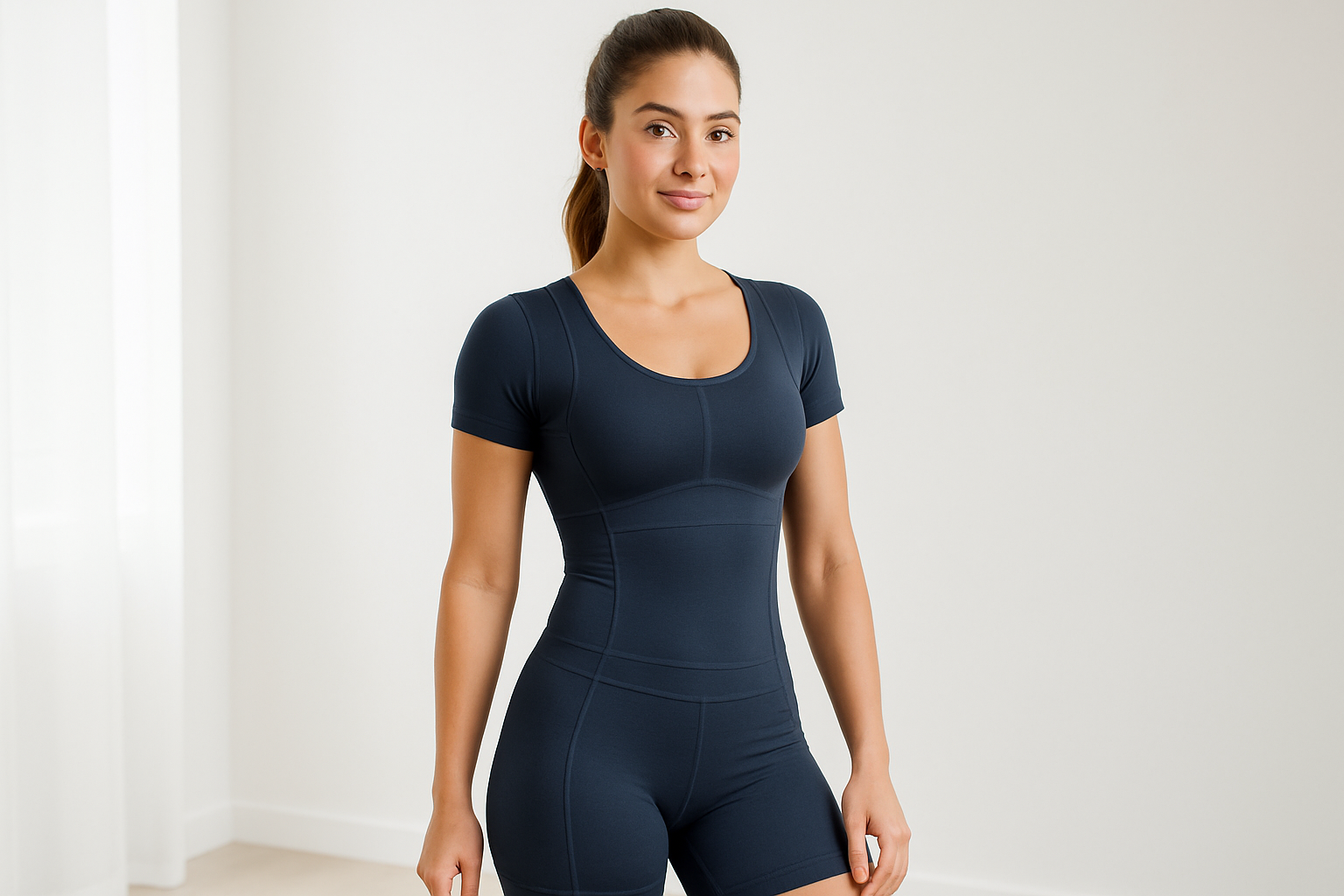
BBL Recovery Resources
Ultimate Guide to BBL Pillows:
- #bbl booty pillow
- #BBL Essentials
- #bbl kit bombshell booty pillow atlanta ga
- #bbl kit bombshell booty pillow austin texas
- #bbl kit bombshell booty pillow beverly hills ca
- #bbl kit bombshell booty pillow chicago il
- #bbl kit bombshell booty pillow dallas texas
- #bbl kit bombshell booty pillow houston texas
- #bbl kit bombshell booty pillow las vegas nv
- #bbl kit bombshell booty pillow los angeles california
- #bbl kit bombshell booty pillow miami fl
- #bbl kit bombshell booty pillow new york ny
- #bbl kit bombshell booty pillow phoenix arizona
- #bbl kit bombshell booty pillow san diego ca
- #bbl kit bombshell booty pillow san francisco ca
- #bbl kit bombshell booty pillow seattle wa
- #BBL Pillow
- #bbl pillow near me
- #bbl pillows near me
- #BBL Recovery
- #bbl recovery pillow atlanta ga
- #bbl recovery pillow austin texas
- #bbl recovery pillow beverly hills ca
- #bbl recovery pillow chicago il
- #bbl recovery pillow dallas texas
- #bbl recovery pillow houston texas
- #bbl recovery pillow las vegas nv
- #bbl recovery pillow los angeles california
- #bbl recovery pillow miami fl
- #bbl recovery pillow new york ny
- #bbl recovery pillow phoenix arizona
- #bbl recovery pillow san diego ca
- #bbl recovery pillow san francisco ca
- #bbl recovery pillow seattle wa
- #bbl surgery atlanta ga
- #bbl surgery austin texas
- #bbl surgery beverly hills ca
- #bbl surgery chicago il
- #bbl surgery dallas texas
- #bbl surgery houston texas
- #bbl surgery las vegas nv
- #bbl surgery los angeles california
- #bbl surgery miami fl
- #bbl surgery new york ny
- #bbl surgery phoenix arizona
- #bbl surgery san diego ca
- #bbl surgery san francisco ca
- #bbl surgery seattle wa
- #Booty Pillow
- #Brazilian Butt Lift
- #Fat Grafting
- #Fat Transfer
- #pillow for bbl
- #pillows for bbl
- #Post Surgery Pillow
- #Post-Op Pillow
- #Post-Op Recovery
- #Surgical Pillow
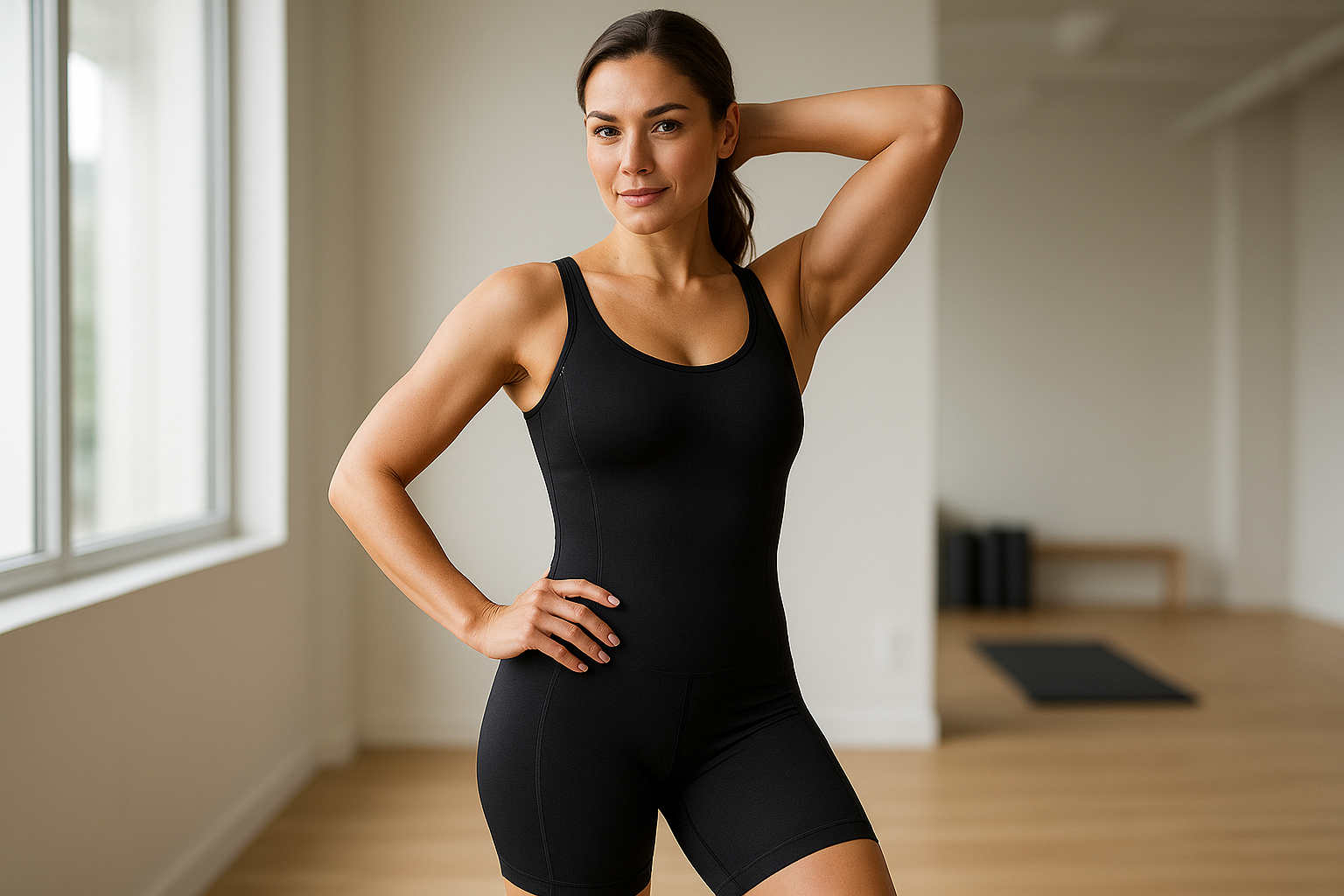
BBL Recovery Resources
- #360 lipo board
- #5 years after liposuction
- #abdominal board
- #abdominal compression board
- #Almohada BBL
- #almohada BBL Amazon
- #almohada BBL Arizona
- #almohada BBL Atlanta
- #almohada BBL Bombshell
- #almohada BBL Boston
- #almohada BBL Bronx
- #almohada BBL Brooklyn
- #almohada BBL California
- #almohada BBL cerca de mí
- #almohada BBL cerca de mí Atlanta
- #almohada BBL cerca de mí Chicago
- #almohada BBL cerca de mí Dallas
- #alternative to liposuction
- #back pain relief stretcher pillow
- #back stretch pillow 2025
- #back stretch pillow best sale
- #back stretch pillow cheap
- #back stretch pillow discount
- #back stretch pillow outlet
- #back stretcher pillow guide
- #back support cushion
- #bbl 2024 pillow wholesale
- #bbl 2024 seat cushion
- #bbl 2025 pillow wholesale
- #bbl 2025 seat cushion
- #bbl basic bundle
- #bbl bed
- #bbl booty pillow
- #bbl boppy pillow
- #bbl boppy pillow back support
- #bbl cheap pillow wholesale
- #bbl cheap seat cushion
- #bbl discount pillow wholesale
- #bbl discount seat cushion
- #bbl exercise
- #bbl hot sale pillow wholesale
- #bbl outlet pillow wholesale
- #bbl outlet seat cushion
- #bbl pillow
- #bbl pillow near me
- #bbl pillow online wholesale
- #bbl pillow wholesale cheap
- #bbl pillow wholesale deals
- #bbl pillow wholesale hotsell
- #bbl pillow with back support best sale
- #bbl pillow with back support hot sale
- #bbl pillow with back support on sale
- #bbl pillows near me
- #bbl pillows ner me
- #bbl post surgery
- #bbl recovery
- #bbl recovery pillow
- #bbl recovery supplies
- #bbl sales seat cushion
- #bbl seat cushion best sale
- #bbl seat cushion cheap
- #bbl seat cushion deals
- #bbl seat cushion online
- #bbl seat online cushion
- #bbl surgery supplies
- #bbl toilet riser
- #bbl toilet seat
- #bbl toilet seat vs bbl pillow
- #best bbl pillow bombshell
- #best bbl pillow bombshell booty pillow
- #best bbl pillow my booty pillow
- #best post bbl faja
- #best post bbl fajas
- #body contouring
- #bombshell booty pillow
- #boppy pillow for bbl
- #boppy pillow vs bbl pillow
- #brazilian butt lift bed
- #cojin bbl
- #comfortable kneeling pad
- #compression garments
- #do fajas work without surgery
- #dr. approved bbl foam pillow
- #durable & comfortable kneeling pad
- #fahas store near me
- #faja
- #faja store near me
- #faja without surgery
- #fajas
- #fajas colombiana near me
- #fajas colombianas
- #fajas colombianas near me
- #fajas colombianas with built in bra and sleeves
- #fajas store near me
- #female urination device
- #foam for liposuction
- #foams for lipo
- #foams lipo
- #funnel for peeing
- #guide to bbl pillows
- #guide to bbl recovery
- #guide to post surgical success
- #how long after bbl can i sit without pillow
- #how to avoid marks from lipo foam
- #how to get rid of fluid pockets
- #how to sit on boppy pillow
- #how to use a back stretcher pillow
- #how to use a female urinal
- #how to use lipo roller after liposuction
- #how to use stretcher
- #how to use v pillow for back pain
- #ice sculpting body
- #is arm liposuction worth it
- #knee protection
- #kneeling pad
- #lipo board vs lipo foam
- #lipo foam boards
- #lipo gone wrong
- #lipo lumbar molder foam board
- #liposuction foam pads
- #liposuction foams
- #liposuction gone wrong
- #liposuction recovery
- #liposuction recovery essentials
- #liposuction side foam pads
- #lymphatic drainage massage roller
- #non-surgical liposuction alternatives
- #pee funnel for ladies
- #peeing devices for women
- #pillow for cheap back pain
- #pillow for hot sale back pain
- #pillow for sale back pain
- #pillow for shop back pain
- #post surgery recovery
- #post surgical foam board
- #post-op faja
- #proper back stretcher
- #putting pillow under lower back
- #recovery bbl pillow
- #rigid board like abdomen
- #seroma after liposuction
- #shapewear
- #stage 1 2 or 3 post surgery fajas for bbl tummy tuck and liposuction
- #sweat suit lose weight
- #sweat top to lose weight
- #the benefits of kneeling pads
- #the Brazilian butt lift mattress
- #urinary devices female
- #waist trainer
- #with lipo foam boards and ab boards
- #workout suit that makes you sweat
- #yesindeed brazilian butt lift pillow
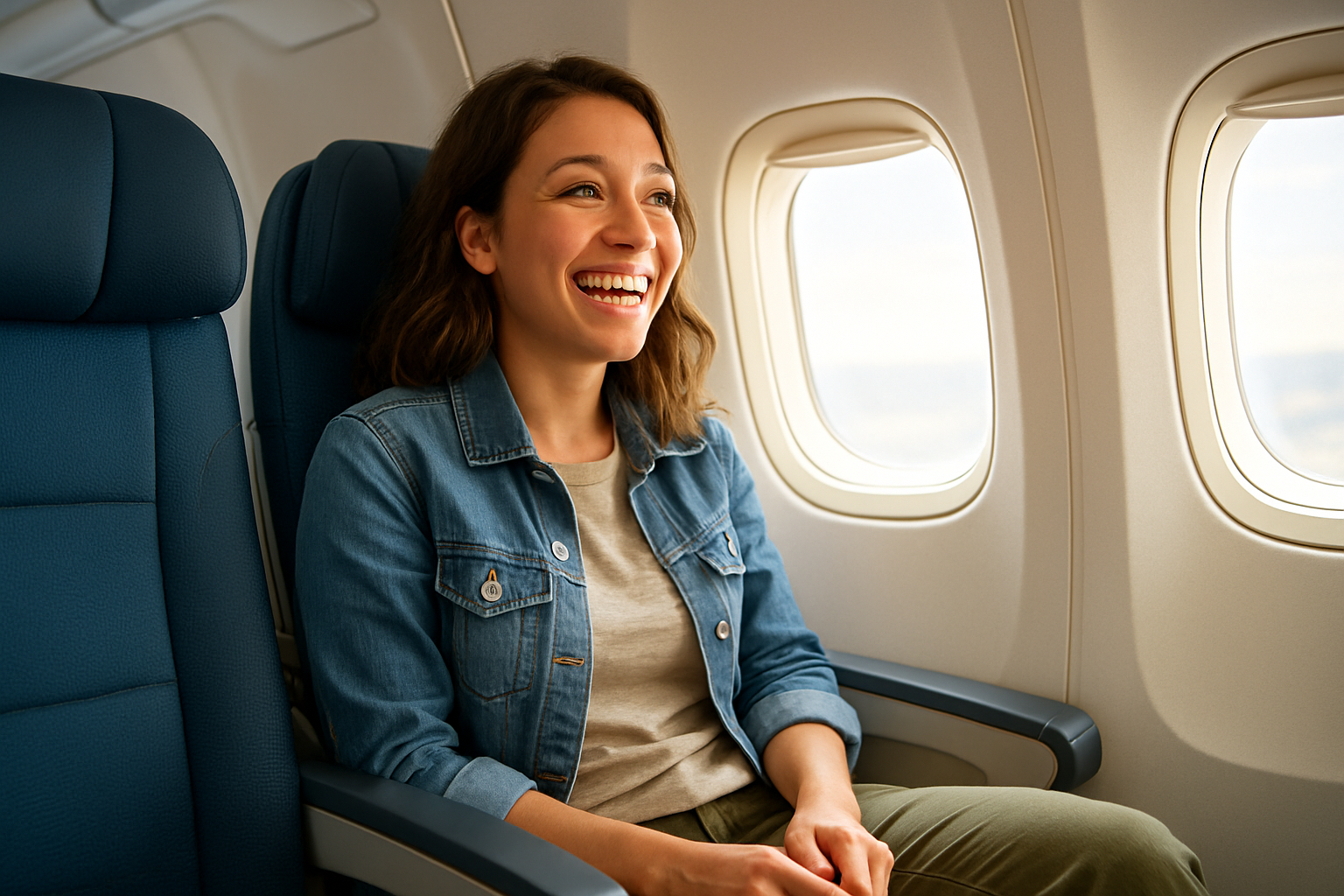
BBL Recovery Resources
How to sit on a plane after BBL?
- #BBL booty pillow
- #BBL butt pillow
- #BBL cushion
- #BBL kit
- #BBL pillow
- #BBL pillow for airplane
- #bbl pillow for car
- #BBL pillow for driving
- #BBL pillow for travel
- #bbl pillow near me
- #BBL pillow with hole
- #bbl pillows
- #bbl pillows near me
- #BBL post op supplies
- #BBL recovery
- #BBL recovery chair
- #BBL recovery kit
- #bbl recovery kits
- #BBL recovery supplies
- #BBL recovery timeline
- #BBL seat cushion
- #BBL surgery
- #bbl surgery pillow
- #BBL surgery supplies
- #best bbl pillow
- #best bbl pillow for driving
- #best bbl pillow for sitting
- #Bombshell BBL
- #bombshell booty pillow
- #bombshell booty pillow best bbl pillow
- #bombshell booty pillow the best bbl pillow
- #bombshell booty pillows
- #booty pillow
- #booty pillows
- #Brazilian Butt Lift
- #brazilian butt lift booty pillow
- #brazilian butt lift pillow
- #brazilian butt lift pillows
- #brazilian buttock lift pillow
- #brazilian buttock pillow
- #butt pilllow
- #butt pillow
- #Can exercise enhance my BBL results?
- #Can you fly after a BBL?
- #Can you speed up BBL healing?
- #Cosmetic surgery recovery
- #Faja
- #Flying after a BBL
- #How can I minimize BBL risks?
- #How do BBL pillows help recovery?
- #How do I choose the right BBL pillow?
- #How do I sit on a long-haul flight after BBL surgery?
- #How do you sleep after a BBL?
- #How does a BBL work?
- #How long after a BBL can I sit without a pillow?
- #How long after a BBL can I sit?
- #How long do BBL results last?
- #How long do you have to use a BBL pillow?
- #How long does BBL surgery take?
- #How long is the BBL recovery period?
- #How to sit after BBL surgery?
- #How to sit on a plane after BBL?
- #How to use a BBL pillow?
- #Lipo foam
- #my booty pillow
- #patented BBL pillow
- #Plastic surgery recovery
- #Post surgery butt pillow
- #Post-op compression garments
- #Post-op supplies
- #Tabla abdominal
- #What are the benefits of a BBL?
- #What are the guidelines for sleeping after a BBL?
- #What are the risks of BBL surgery?
- #What happens if I sit without a BBL pillow?
- #What is a BBL pillow with a patent?
- #What is a BBL pillow?
- #What is a Brazilian butt lift (BBL)?
- #What should I pack for BBL travel?
- #What to do after a BBL?
- #When can I sit after a BBL?
- #When can I start driving again after my BBL?
- #When can I stop using a BBL pillow?
- #When can I travel after a BBL?

BBL Recovery Resources
Can I drive with my BBL pillow?
- #"bbl Pillows" Sale
- ##1 BBL PILLOW
- ##1 BBL Surgeon in Miami
- #2025 best bbl pillow bombshell booty pillow
- #Abdominal board Chicago Illinois
- #Almohada BBL
- #BBL booty pillow
- #bbl booty pillows
- #BBL butt pillow
- #bbl butt pillows
- #BBL cushion
- #bbl doughnut pillow
- #BBL kit
- #BBL lumbar backboard
- #BBL lumbar backboard Phoenix Arizona
- #BBL mattress
- #bbl pillow
- #bbl pillow after surgery
- #bbl pillow airplane
- #bbl pillow alternative
- #bbl pillow amazon
- #bbl pillow australia
- #bbl pillow bag
- #bbl pillow bed
- #bbl pillow best
- #bbl pillow black
- #bbl pillow boppy
- #bbl pillow car
- #bbl pillow case
- #bbl pillow chair
- #bbl pillow cheap
- #bbl pillow colombia
- #bbl pillow diy
- #bbl pillow donut
- #bbl pillow driving
- #bbl pillow dubai
- #BBL pillow for airplane
- #bbl pillow for car
- #bbl pillow for driving
- #bbl pillow for plane
- #bbl pillow for sitting
- #bbl pillow for sleeping
- #bbl pillow how long
- #bbl pillow how to sit
- #bbl pillow how to use
- #bbl pillow near me
- #bbl pillow with hole
- #bbl pillows near me
- #BBL post op supplies
- #BBL post op supplies Miami Florida
- #BBL recovery
- #BBL recovery chair
- #BBL recovery kit
- #BBL recovery kit Dallas Texas
- #BBL recovery supplies
- #BBL recovery supplies Houston Texas
- #BBL recovery timeline
- #BBL seat cushion
- #BBL supplies after surgery Atlanta Georgia
- #BBL supplies kit New York New York
- #BBL surgery
- #BBL surgery supplies
- #BBL surgery supplies Sacramento California
- #BBL wedge pillow
- #best bbl pillow
- #Bombshell BBL
- #bombshell booty pillow
- #bombshell booty pillow bbl pillow
- #bombshell booty pillow best bbl pillow
- #bombshell booty pillow the best bbl pillow
- #Brazilian butt lift
- #butt pillow
- #Can you speed up BBL healing?
- #Cojín BBL
- #Cosmetic surgery recovery
- #Faja
- #faja postoperatoria
- #female urinal
- #hombys bbl pillow
- #How do you sleep after a BBL?
- #How long after a BBL can I sit without a pillow?
- #How long after a BBL can I sit?
- #How long do you have to use a BBL pillow?
- #How to sit after BBL surgery?
- #How to use a BBL pillow?
- #Lipo compression garment
- #Lipo foam
- #Lipo foam San Francisco California
- #Lipo lumbar backboard
- #Liposuction supplies
- #Liposuction supplies Los Angeles California
- #my booty pillow bbl pillow
- #Plastic surgery recovery
- #Post surgery butt pillow
- #Post-liposuction supplies
- #Post-op compression garments
- #Post-op compression garments Washington DC
- #Post-op supplies
- #Tabla abdominal
- #Tabla abdominal Miami Florida
- #What happens if I sit without a BBL pillow?
- #What to do after a BBL?
- #When can I start driving again after my BBL?

BBL Recovery Resources
BBL Smell How Long Does It Last ?
- #2025 best bbl pillows
- #after bbl brazilian butt lift pillow
- #bbl booty pillow
- #bbl can smell
- #bbl can smell bad
- #bbl causes smell
- #bbl does it smell
- #bbl kit
- #bbl pillow
- #bbl pillow for car
- #bbl pillow for driving
- #bbl pillow for sitting
- #bbl pillow kit
- #bbl pillow kits
- #bbl pillow near me
- #bbl pillow near me Atlanta GA
- #bbl pillow near me Charlotte NC
- #bbl pillow near me Chicago IL
- #bbl pillow near me Dallas TX
- #bbl pillow near me Houston TX
- #bbl pillow near me Las Vegas NV
- #bbl pillow near me Los Angeles CA
- #bbl pillow near me Miami FL
- #bbl pillow near me New York NY
- #bbl pillow near me Orlando FL
- #bbl pillow near me Philadelphia PA
- #bbl pillow near me Phoenix AZ
- #bbl pillow near me San Antonio TX
- #bbl pillow near me San Diego CA
- #bbl pillow near me Tampa FL
- #bbl pillows
- #bbl pillows near me
- #bbl recovery kit
- #bbl side effects smell
- #bbl smell
- #bbl smell bad
- #bbl smell cardi b
- #bbl smell explained
- #bbl smell like
- #bbl smell meaning
- #bbl smell real
- #bbl smell reddit
- #bbl smell tiktok
- #bbl smell urban dictionary
- #bbl surgery smell
- #bbls smell
- #bbls smell bad
- #best bbl pillow
- #best bbl pillows
- #bombshell booty pillow
- #booty pillow
- #brazilian butt lift booty pillow
- #brazilian butt lift pillow
- #brazilian buttock lift pillow
- #butt wedge
- #cardi b bbl smell
- #does bbl smell
- #does bbl smell go away
- #does cardi b bbl smell
- #how long does bbl smell last
- #pillow for bbl
- #pillows for bbl
- #what does bbl smell like
- #what does bbl smell mean
- #what is bbl smell like poop
- #whats a bbl smell
- #why do bbl smell bad
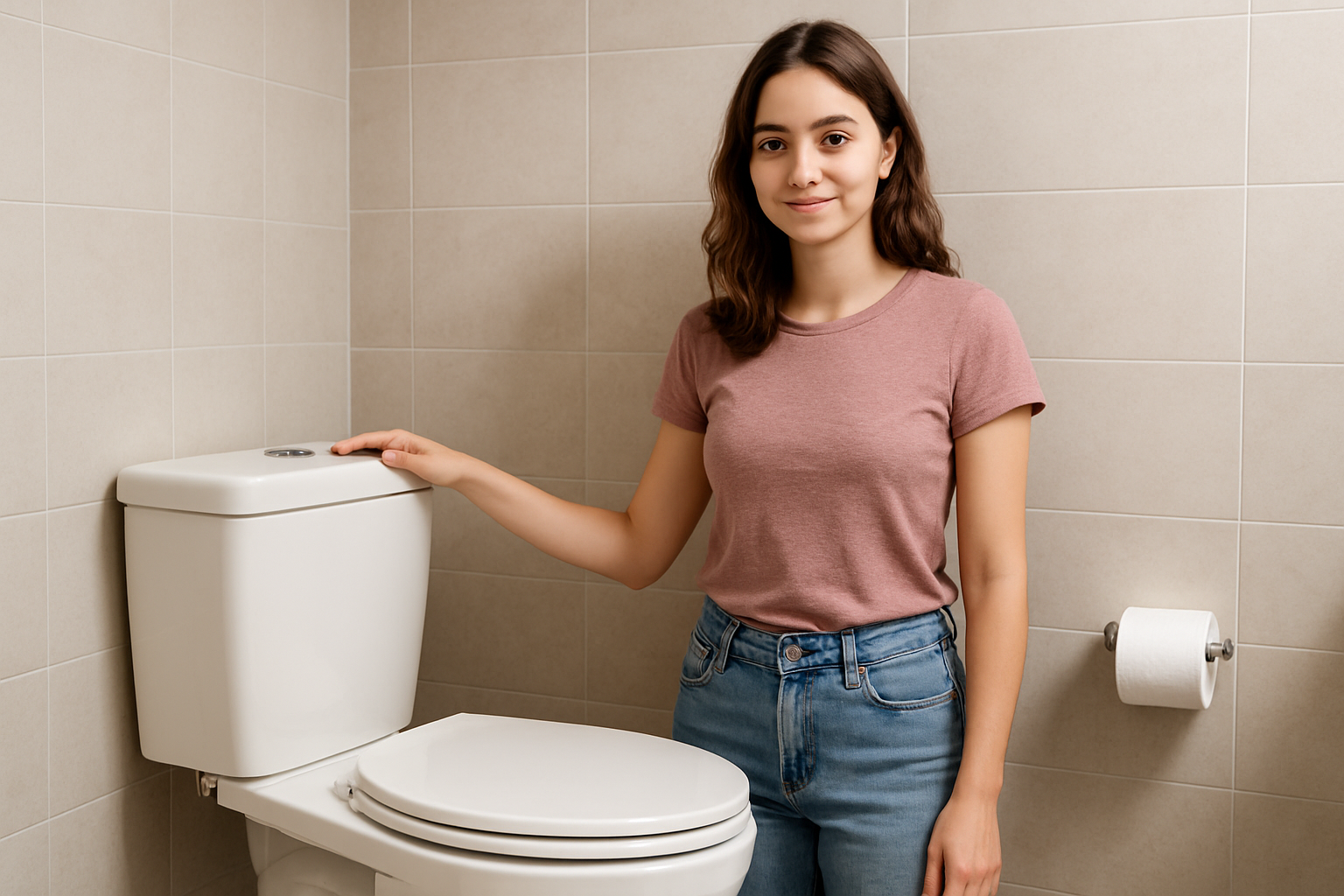
BBL Recovery Resources
The Ultimate Guide to Female Urination Devices
- #"bbl Pillows" Sale
- #5 years after liposuction
- #a woman pee tool
- #alternative to liposuction
- #are bbl kits worth it
- #b b l
- #bandage foam
- #bbl before and after in clothes
- #bbl cosmetic surgery
- #bbl driving pillow
- #bbl examples
- #bbl healing process
- #bbl kit
- #bbl kitb
- #bbl pillow for car
- #bbl pillow for driving
- #bbl pillow near me
- #bbl pillows near me
- #bbl procedure
- #bbl recovery kits
- #bbl size
- #bbl surgery pillow
- #bbl.
- #best bbl pillow
- #best bbl pillow bombshell booty pillow
- #best bbl pillow my booty pillow
- #best compression garment after liposuction
- #best stage 2 compression garment after tummy tuck
- #big bundle
- #body bandage wrap
- #bombshell booty pillow best bbl pillow
- #Bombshells Female Urinal
- #bra with sleeves
- #brazalian butt lift
- #brazilian bum lift surgery
- #brazilian but
- #brazilian butt life
- #brazilian butt lift aftercare
- #brazilian butt lift recovery
- #brazilian buttock lift
- #brazillian butt
- #breast contour
- #breast reduction before and after clothes
- #bum lift
- #bum lift surgery
- #bum operation
- #but lift
- #butt lift procedure
- #butt lift straps
- #buttock lift surgery
- #comfortable kneeling pad
- #compression fabric
- #compression underwear target
- #compression waist
- #define bbl
- #device for women to pee
- #face bra
- #facelift after surgery
- #female device for urinating
- #female urination device
- #female urination device car
- #female urination devices
- #foam for liposuction
- #funnel for peeing
- #gynecomastia brassieres
- #hikers
- #how do you use a female urinal
- #how long does it take to recover from a bbl
- #how long is a bbl recovery
- #how long is bbl recovery
- #how long to wear compression bra after breast augmentation
- #how to treat nerve pain after liposuction
- #how to use a female urinal
- #how to use female urinal
- #ice body sculpting
- #ice sculpting body
- #institute of beauty & wellness
- #lipo foam boards
- #lipo massager
- #lipo scars on back
- #liposuction foams
- #liposuction wraps
- #mtf shapewear
- #ogee massage roller
- #ogee rolle
- #ogee roller
- #pee funnel for ladies
- #peeing device woman
- #peeing devices for women
- #pillows for kneeling
- #plastic surgery recovery
- #post surgical clothing
- #pressure garments
- #rigid board like abdomen
- #seroma after lipo
- #seroma after liposuction
- #shaper for thighs
- #stand to pee device
- #strain-free way to use the toilet
- #types of bbl
- #types of bbl shapes
- #urinary devices female
- #what a bbl
- #what are bbls
- #what is a bbl
- #what is a bbl plastic surgery
- #what is a brazilian but lift
- #what is a brazilian butt
- #what is bbl
- #what is brazilian butt lift
- #what is chin lipo
- #what os bbl
- #what us a bbl
- #what's a butt lift
- #whats a bbl
- #whats abbl
- #whats bbl surgery
- #why is it called a brazilian butt lift
- #woman pee tool
- #women's device to pee standing up
- #women's urination funnel
- #womens urine device

BBL Recovery Resources
Unveiling the Different Types of BBL
- #abdominal binder
- #affordable bbl surgery pillow
- #affordable lymphatic massage near me
- #after bbl brazilian butt lift care
- #after bbl brazilian butt lift pillow
- #after bbl butt lift care
- #after bbl care
- #after BBL How do you sit with a BBL pillow?
- #after bbl pillow
- #after bbl surgery must haves
- #after bbl surgery when can i sit
- #almohada BBL cerca de mí Chicago
- #almohada BBL cerca de mí Dallas
- #almohada BBL cerca de mí El Paso
- #almohada BBL cerca de mí Florida
- #almohada BBL cerca de mí Houston
- #almohada BBL cerca de mí Las Vegas
- #almohada BBL cerca de mí Los Ángeles
- #almohada BBL cerca de mí Miami
- #almohada BBL cerca de mí Nueva York
- #almohada BBL cerca de mí Phoenix
- #almohada BBL cerca de mí San Antonio
- #almohada BBL cerca de mí San Diego
- #almohada BBL cerca de mí San Francisco
- #almohada BBL cerca de mí San Jose
- #almohada BBL Chicago
- #almohada BBL cómoda
- #almohada bbl cómoda para el coche
- #almohada BBL Dallas
- #almohada bbl de apoyo
- #almohada bbl de espuma
- #almohada BBL de viaje
- #almohada BBL después de cirugía BBL
- #almohada bbl después de la cirugía
- #almohada BBL Detroit
- #almohada BBL duradera
- #almohada BBL eBay
- #almohada BBL El Paso
- #almohada BBL en venta
- #almohada BBL ergonómica
- #almohada BBL Florida
- #almohada BBL Georgia
- #almohada BBL Las Vegas
- #almohada BBL Los Angeles
- #almohada BBL Manhattan
- #almohada BBL Massachusetts
- #almohada BBL Miami
- #almohada BBL Miami Beach
- #almohada BBL Michigan
- #almohada bbl mikami
- #almohada BBL Nevada
- #almohada BBL Nueva York
- #b b l
- #bandage foam
- #bbl aftercare
- #bbl bed
- #bbl before and after
- #bbl before and after in clothes
- #bbl booty pillow
- #bbl booty pillow near me
- #bbl compression garment
- #bbl cosmetic surgery
- #bbl examples
- #bbl healing process
- #bbl mattress
- #bbl pillo for car
- #bbl pillow
- #bbl pillow after surgery
- #bbl pillow for driving
- #bbl pillow near me
- #bbl pillows near me
- #bbl procedure
- #bbl recovery
- #bbl recovery kit
- #bbl recovery supplies
- #bbl size
- #bbl surgeon near me
- #bbl surgery
- #bbl.
- #best bbl pillow
- #best bbl pillow after surgery
- #best bbl pillow for driving
- #best stage 2 compression garment after tummy tuck
- #body bandage wrap
- #bombshell booty pillow
- #booty pillow near me
- #bra with sleeves
- #brazalian butt lift
- #brazilian bum lift surgery
- #brazilian but
- #brazilian butt life
- #brazilian butt lift aftercare
- #brazilian butt lift bed
- #brazilian butt lift cost
- #brazilian butt lift mattress
- #brazilian butt lift pillow
- #brazilian butt lift recovery
- #brazilian butt lift recovery tips
- #brazilian buttock lift
- #brazillian butt
- #breast contour
- #breast reduction before and after clothes
- #bum lift
- #bum lift surgery
- #bum operation
- #but lift
- #butt lift procedure
- #butt lift straps
- #butt pillow near me
- #buttock lift surgery
- #compression fabric
- #compression underwear target
- #compression waist
- #define bbl
- #face bra
- #facelift after surgery
- #gynecomastia brassieres
- #how long does it take to recover from a bbl
- #how long is a bbl recovery
- #how long is bbl recovery
- #how long to wear compression bra after breast augmentation
- #how to sit after bbl
- #institute of beauty & wellness
- #lipo foam
- #liposuction wraps
- #mtf shapewear
- #pillow for bbl
- #pillows for bbl
- #plastic surgery recovery
- #post surgery pillow
- #post surgical clothing
- #pressure garments
- #shaper for thighs
- #types of bbl
- #types of bbl shapes
- #what a bbl
- #what are bbls
- #what is a bbl
- #what is a bbl plastic surgery
- #what is a brazilian but lift
- #what is a brazilian butt
- #what is bbl
- #what is brazilian butt lift
- #what os bbl
- #what us a bbl
- #what's a butt lift
- #whats a bbl
- #whats abbl
- #whats bbl surgery
- #why is it called a brazilian butt lift

BBL Recovery Resources
Finding the Best BBL Pillows for Car and airplane Travel
- #Almohada BBL
- #almohada BBL Amazon
- #bbl butt pillow
- #bbl butt pillow near me
- #bbl butt pillow wedges
- #bbl butt wedge
- #bbl driving pillow
- #bbl driving pillows
- #bbl pillow
- #bbl pillow for airplane
- #bbl pillow for car
- #bbl pillow for travel
- #bbl pillow kit
- #bbl pillow near me
- #bbl pillows
- #bbl pillows near me
- #bbl post surgery supplies
- #bbl recovery pillow
- #bbl recovery supplies
- #bbl surgery pillow
- #best bbl pillow
- #best bbl pillow for sitting
- #best bbl pillows
- #big booty pillow
- #big butt pillow
- #bombshell booty pillow
- #bombshell booty pillow bbl pillow
- #booty pillow
- #booty pillow near me
- #brazilian butt lift booty pillow
- #brazilian butt lift pillow
- #brazilian buttock lift pillow
- #butt wedge
- #buttt wedges
- #cojin bbl
- #cojin post operatorio bbl
- #liposcution recovery supplies
- #medcare medical supply
- #my booty pillow
- #postoprecovery
- #what is the best bbl pillow for travel
- #Where can I buy a high-quality BBL pillow?

BBL Recovery Resources
Can Sitting at Desk Job Ruin Your BBL Results
- #Almohada BBL
- #almohada BBL Amazon
- #almohada BBL Arizona
- #almohada BBL Atlanta
- #almohada BBL Bombshell
- #almohada BBL Boston
- #almohada BBL Bronx
- #almohada BBL Brooklyn
- #almohada BBL California
- #almohada BBL cerca de mí
- #almohada BBL cerca de mí Atlanta
- #almohada BBL cerca de mí Chicago
- #almohada BBL cerca de mí Dallas
- #almohada BBL cerca de mí El Paso
- #almohada BBL cerca de mí Florida
- #almohada BBL cerca de mí Houston
- #almohada BBL cerca de mí Las Vegas
- #almohada BBL cerca de mí Los Ángeles
- #almohada BBL cerca de mí Miami
- #almohada BBL cerca de mí Nueva York
- #almohada BBL Miami
- #almohada BBL Miami Beach
- #Am I a good candidate for a BBL?
- #amazon bbl driving pillow
- #ASS PILLOW
- #bbl butt pillow
- #bbl cushion
- #bbl driving pillow
- #bbl kit
- #bbl pillow
- #bbl pillow after surgery
- #bbl pillow alternatives
- #bbl pillow for car
- #bbl pillow for driving
- #bbl pillow for sitting
- #bbl pillow for sleeping
- #bbl pillows near me
- #bbl post surgery supplies
- #bbl recovery kitbbl pillow near me
- #bbl recovery pillow
- #bbl recovery supplies
- #bbl seat
- #bbl seat cushion
- #best bbl pillow
- #best bbl pillow for sitting
- #best bbl pillow for sleeping
- #best bbl recovery pillow
- #best butt cushion
- #best butt pillow
- #big booty pillow
- #big butt pillow
- #bl pillow reviews
- #booty pillow
- #booty pillow after surgery
- #booty pillow near me
- #booty shaped pillow
- #brazilian booty pillow
- #brazilian butt lift pillow
- #brazilian buttock lift pillow
- #bum pillow
- #bum shaped pillow
- #butt cushion
- #butt lift bbl surgery
- #butt pillow
- #butt shaped pillow
- #buttock pillow
- #buttock support
- #buttress pillow
- #Can you sit in a car after BBL surgery with a pillow?
- #cojin bbl
- #cojin para bbl
- #cojin post operatorio
- #cosmetic surgery
- #cushion for sore bum
- #cushion for sore buttocks
- #donut pillow for bbl
- #How do you sleep with a BBL pillow?
- #How long do you have to use a BBL pillow?
- #How much does a BBL cost?
- #How to sit after BBL surgery?
- #liposuction recovery supplies
- #pillow for butt augmentation
- #pillow for butt pain
- #pillow for buttock pain
- #plastic surgery
- #post bbl recovery
- #pressure relief pillow for buttocks
- #seat cushion for back pain
- #seat cushion for buttock pain
- #What are the risks of BBL surgery?
- #What is a BBL pillow?
- #What is a Brazilian butt lift?
- #What is a skinny BBL?
- #What is the best BBL pillow?
- #What is the difference between a BBL and butt implants?
- #What kind of anesthesia is used for a BBL
- #When can you stop using a BBL pillow?

BBL Recovery Resources
Making Your Donut Pillow More Comfortable for BBL Recovery
- #"bbl Pillows" Sale
- ##1 BBL Surgeon in Miami
- #2025 How to use a BBL pillow after surgery?
- #5 years after liposuction
- #5x faja
- #abdominal binder after abdominal surgery
- #abdominal binder post surgery
- #after bbl brazilian butt lift pillow
- #average cost of breast reduction
- #b b l
- #bbl bed
- #bbl butt
- #bbl pillow after surgery
- #bbl pillow near me
- #bbl pillow sale
- #bbl pillows near me
- #bbl plastic surgery
- #benefits of arnica tea
- #best faja
- #binding breasts
- #bra compression
- #bra with front zip
- #brazilian but
- #brazilian butt lift booty pillow
- #brazilian butt lift pillow
- #brazilian butt lift recovery
- #brazilian buttock lift
- #breast aug bra
- #breast binding bras
- #breast implant bra
- #breast reduction surgery cost with insurance
- #breast reduction surgery cost without insurance
- #bum lift
- #butt implantation
- #butt shaped bbl pillow
- #chin lipo recovery
- #compression apparel
- #compression bra post surgery
- #compression clothing for women
- #compression garments after liposuction
- #compression garments after tummy tuck
- #compression store
- #contour clothing
- #do fajas work
- #faha clothing
- #faja bodysuit
- #faja garment
- #faja near me
- #faja post surgery
- #faja shaper
- #faja to english
- #fajas near me
- #female device for urinating
- #foam liposuction
- #full body compression garment
- #full body compression suit
- #full body faja
- #how long does it take to recover from tummy tuck
- #liposuction compression garment
- #lymphatic massager
- #male girdle
- #man girdle
- #medical grade compression
- #men's girdle
- #peeing device woman
- #pillow butt
- #pillow for bbl
- #pillows for bbl
- #plus size girdle
- #plus size shaper
- #plus size strapless shapewear
- #post breast augmentation bra
- #post surgical compression bra
- #post surgical compression garments
- #post tummy tuck compression garment
- #postpartum compression garment
- #recovery after breast augmentation
- #recovery after liposculpture
- #recovery from breast implant
- #recovery process for liposuction
- #shaper male
- #shapewear male
- #shapewear plus size
- #slim thickness
- #snatch body faja
- #snatch wear
- #snatched body faja
- #snatched bodysuit
- #stage 3 faja
- #stand to pee device
- #surgery bra
- #surgical brassieres
- #thera scar
- #thong bodysuit shapewear
- #tummy tuck belly button healing stages
- #tummy tuck compression garments
- #tummy tuck faja
- #tummy tuck recovery timeline
- #tummy tucker men's
- #undergarment shapewear
- #urinary devices female
- #waist snatchers
- #waist trainer faja
- #what a bbl
- #what are bbls
- #what are compression pants for
- #what do compression pants do
- #what does compression wear do
- #what is a binder bra
- #what is a brazilian butt
- #what is a faha
- #what is arnica gel used for
- #what is fajas
- #what is shapewear
- #whats a faja

BBL Recovery Resources
BBL Sitting Rules: How Recovery Pillows Save Your Results
- #"bbl Pillows" Blowout Sale
- #"bbl Pillows" clearance Sale
- #"bbl Pillows" Sale
- ##1 BBL PILLOW
- ##1 BBL Surgeon in Miami
- #after bbl brazilian butt lift pillow
- #bbl pillow
- #bbl pillow near me
- #bbl pillows
- #bbl pillows near me
- #bbl surgery
- #best bbl pillow
- #brazilian butt lift
- #brazilian butt lift pillow
- #brazilian butt lift pillows
- #brazilian buttock lift pillow
- #brazilian buttock pillow
